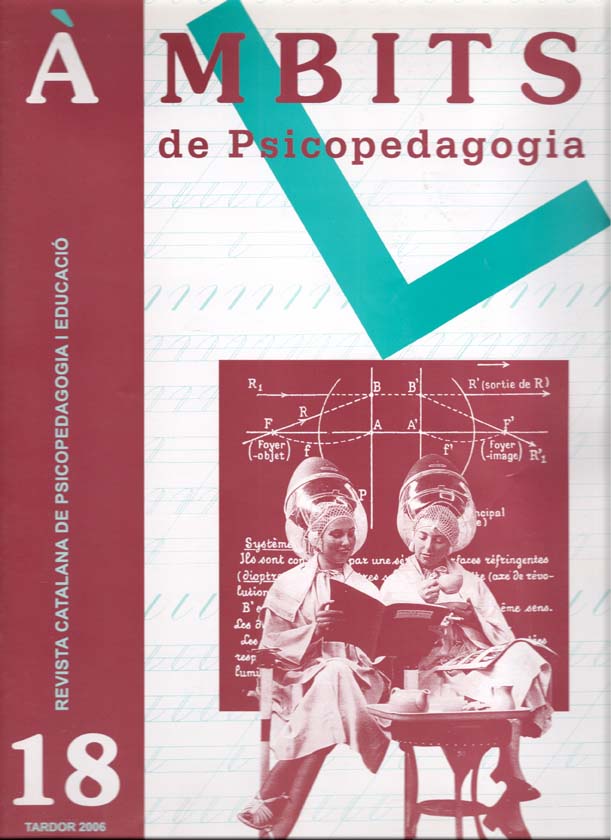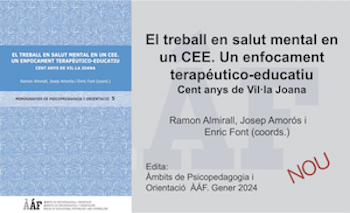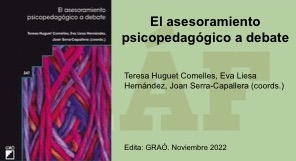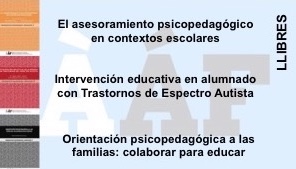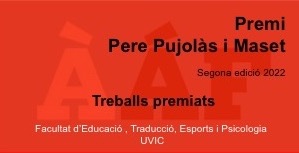Student maltreatment (II). Administration of CESC (Classroom Conduct and Social Experiences)
Abstract
In this paper we describe the conditions for application and the rules for the correction and performance of the results of the CESC questionnaire (Behavior and Social Experiences in Class). It is addressed in order to detect the pupils in situation of risk for aggressive behavior or victimization by their peers.
References
Alsaker, F. i Valkanover S. (2001). Early diagnosis and prevention on victimization in kindergarten. En J. Juvonen i S. Graham (Eds.). Peer harassment in school. (pp. 175-195). NY: The Guilford Press.
Coie, J.D., Dodge, K.A. i Coppotelli, H. (1982). Dimensions and types of social status: a cross-age perspective. Developmental Psychology, 18, 557-570.
Collell, J. i Escudé, C. (2002). La violència entre iguals a l’escola: El Bullying, Àmbits de Psicopedagogia, 4, pp 20-24.
Collell, J. i Escudé, C. (2003). El maltractament entre iguals al parvulari: una aproximació al fenomen de la victimització relacional. Àmbits de Psicopedagogia, 7, pp 16-20.
Collell, J. i Escudé, C. (2004a). Rol de les emocions en els processos de maltractament entre alumnes. Àmbits de Psicopedagogia, 12, pp 21-26.
Collell, J. i Escudé, C. (2004b). Maltractament entre alumnes: necessitat d’una aproximació no culpabilitzadora. Àmbits de Psicopedagogia, 14, pp 12-15.
Collell, J. i Escudé, C. (2005a). Bullying: estrategias de prevención. En M. Alvarez y R. Bisquerra (coord). Manual de orientación y tutoría, Barcelona: Cisspraxis).
Collell, J. i Escudé, C. (2005b). Tractem-nos bé!, Guixdos 120 - Suplement Guix, 320.
Collell, J. i Escudé, C. (2006a). Vamos a llevarnos bien, Aula de innovación educativa, 151, pp 85-96.
Collell, J. i Escudé, C. (2006b). ¿Nos llevamos bien?, Aula de innovación educativa, 152, pp 83-95.
Crick, N.R. i Grotpeter, J.K. (1995). Relational aggression, gender & social psychological adjustment. Child Development, 66, 710-722
Crick, N.R. i Grotpeter, J.K. (1996). Children's treatment by peers: victims of relational and overt aggression. Development and Psychopathology, 8, 367-380
Fiscalia de Menores (2005), Instrucción 10/2005 sobre tratamiento del acoso escolar desde el sistema de justicia juvenil, http://www.datadiar.com/portal/ultimah/acosoescolar_all.htm, (extreta el 14 agost 2006)
Kaltiala-Heino R, Rimpela M, Rantanen P. i Rimpela A. (2000). Bullying at school: An indicator of adolescents at risk for mental disorders. Journal of adolescence, 23, 661-674.
Kochenderfer, B. i Ladd, G.W. (1996a). Peer victimization: cause or consequence of school maladjustment?. Child Development, 67, 1305-1317
Kumpulainen, K., Räsänen, E., Henttonen, I., Almqvist, F., Kresanov, K., Linna, S.L., Moilanen, I., Piha, J., Puura, K. i Tamminen, T. (1998). Bullying and psychiatric symptoms among elementary school-age children. Child abuse & neglect, 22, 705-717
Morison, P. i Masten, A. (1991). Peer reputation in middle childhood as a predictor of adaptation in adolescence: A seven-years follow-up. Child Development Vol 62, 991-1007
Olweus, D. (1993). Bullying at school. What we know and what we can do. Oxford: Blackwell.
Pikas, A. (2002). New developments of the Shared Concern Method, School Psychology International, 23 (3): 307-326.
Robinson, G. i Maines, B., (1997). Crying for Help: The No Blame Approach to Bullying, Bristol: Lucky Duck Publishing
Salmivalli, C., Lagerspetz, K., Björkqvist, K., Osterman, K. i Kaukiainen, A., (1996). Bullying as a group process: participant roles and their relations to social status within the group. Aggressive Behavior, 22, 1-15.
Downloads
Published
Issue
Section
License
The authors maintain their copyright and give the right to the first publication of the work to the journal, registered under a Creative Commons Attribution-Non Commercial-NoDerivs license. This license allows others to download the works and to share them with others as long as they credit the author, but it does not allow for any kind of modification or commercial use.


